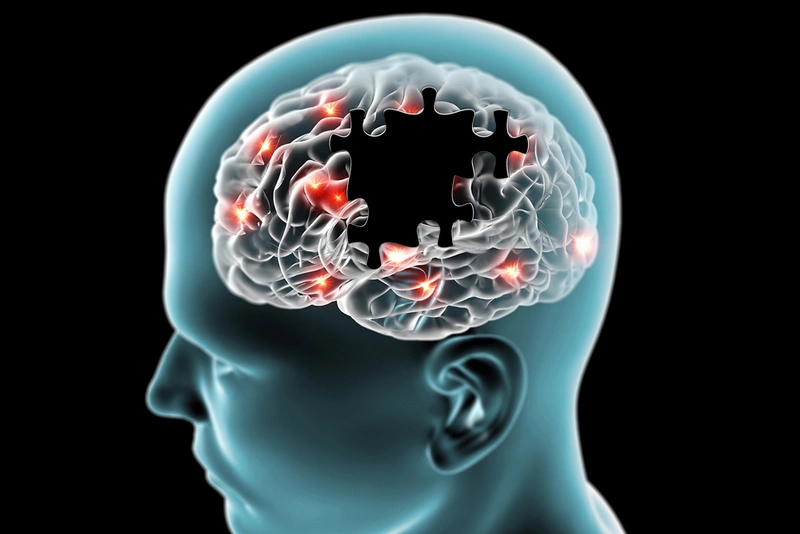This article will delve into the innovative realm of Transcranial Magnetic Stimulation (TMS) as a transformative therapy for individuals struggling with Parkinson’s Disease.
TMS and Parsinson’s Disease
Parkinson’s Disease (PD)
Parkinson’s disease is a progressive disorder, which means it gets worse with time. It is caused by nerve cells in the brain responsible for controlling movements breaking down and degenerating. As these nerve cells become impaired or die, they stop producing dopamine.
An estimated 1.5 million Americans struggle with Parkinson’s disease. Most of the treatment revolves around medications that relieve symptoms and restore chemical balances in the brain, but these medications come with serious side effects. Other options include surgery to try and relieve involuntary movements, but it requires a very specific and invasive form of brain surgery deep in the brain structures.
TMS, however, is a non-invasive, non-prescription treatment that does not.
Transcranial Magnetic Stimulation (TMS)
TMS, or transcranial magnetic stimulation, is a non-invasive form of treatment that doesn’t require any type of anesthesia. It uses magnetic impulses that are dispersed from a cap on your head directly into targeted regions of the brain. The professionals controlling the equipment can choose the level of stimulation and the location that you want to target.
TMS for Parkinson’s Disease can target several locations, combating motor and non-motor symptoms at the same time.

TMS Mechanism and Benefits
TMS is highly effective because it is non-invasive, and it can be used to target any selected region of the brain. For these reasons, TMS for Parkinson’s Disease has become the subject of several studies, used as adjuvant therapy.
The mechanism behind TMS Parkinson’s treatment can reach deeper areas of the brain that would otherwise require very specific and risky brain surgery without any anesthesia or invasion. There are no needles or incisions to be made. Instead, the machine can reach the magnetic stimulation deeply into your brain, boosting the blood flow and productivity of the regions that may no longer be functioning properly.
Current Research and Clinical Studies on TMS for Parkinson’s
TMS Parkinson’s research has found that repetitive TMS works as a non-invasive treatment that stimulates and regulates motor and non-motor symptoms of Parkinson’s disease.
Depression
Depression symptoms are common non-motor symptoms associated with Parkinson’s disease. The reason behind this is that the nerve cells in the brain that are affected by Parkinson’s disease are important in producing dopamine. Many patients have an 80% or higher loss of their dopamine-producing cells in the brain, and without dopamine, muscle, and nerve balances are impaired, causing the motor function to diminish, and depressive symptoms are much more likely.
There are several areas of the brain that can be targeted with TMS to help improve these symptoms, such as the dorsolateral prefrontal cortex.
Over a dozen studies were reviewed to evaluate symptoms like depression, finding that TMS for Parkinson’s offers statistically significant improvement for depressive symptoms.
Motor Function
Other studies focused on the use of high-frequency TMS and Parkinson’s motor symptoms. In these studies, TMS focused on the primary motor cortex to try and improve motor function. Findings confirm that TMS and Parkinson’s offer a way to improve motor function.
How does motor function improve with TMS and Parkinson’s Disease?
Parkinson’s disease is primarily known for having abnormal movements like tremors and slowness. Different levels of progression for Parkinson’s disease can be associated with varying levels of motor control and different areas of the brain responsible for the decay in motor control.
Under normal circumstances, achieving the movement that you want, such as raising a glass or picking something up, requires muscle contractions controlled by the brain. The nervous system cannot directly influence the location of your head, hand, elbow, or foot, but it can control muscle contractions that force your joints to rotate and move exactly how you want them to move.
With Parkinson’s disease, there is a significant pathological change that progressively degenerates neurons in certain parts of the brain, like the basal ganglia.
Under normal circumstances, these neurons would transmit dopamine, but when they degenerate, they don’t function properly, and that means the neural circuits responsible for controlling motor cortical regions stop functioning, so individuals display abnormal movements.

Some of the most common movements include:
- General weakness
- Reduced spontaneous movements
- An expressionless appearance
- Reduced smiling, grimacing, or blinking
- Delayed movements
- Rigidity
- Tremors
- Stooped posture
The motor function can be improved with TMS Parkinson’s treatment because the areas of the brain responsible for making muscles contract and moving the body the way you want can be targeted with the treatment, with neural pathways improved and blood flow to the area boosted.
How to improve your life after TMS therapy
TMS therapy can offer significant improvements, and there are things you can do to continue to improve your quality of life after you receive treatment.
When it comes to depression, finding regular mental health self-care tips like journaling, yoga, walks around your neighborhood, meditation, gratitude practices, and even volunteerism can help you to continue to boost the changes that TMS has on the areas of the brain responsible for depression and to increase the dopamine production in your brain.
Future Directions and Challenges
There remain some challenges with TMS and Parkinson’s disease, the biggest of which is that not all healthcare providers cover the cost of TMS. Most of the benefits associated with regular TMS therapy can last for several months or up to a year, but they are not permanent because the brain is plastic and always changing.
As Parkinson’s disease is an ongoing, degenerative disease that continues to get worse with time, TMS treatment for Parkinson’s Disease is something that will likely need to be done every year or two in order to combat symptoms and keep them from getting worse.
While not all health insurance covers the cost and not every provider offers the services within their network, there are qualified facilities that can help you get the treatment you or a loved one needs today.
Summing Up
TMS for Parkinson’s Disease can have a significant potential impact on patients’ lives. This type of treatment is much safer and more effective than medications or brain surgery, offering a way to relieve motor and non-motor symptoms associated with Parkinson’s. If you or someone close to you is struggling with Parkinson’s disease, it’s imperative that you research further and explore the application of TMS for neurological disorders.
